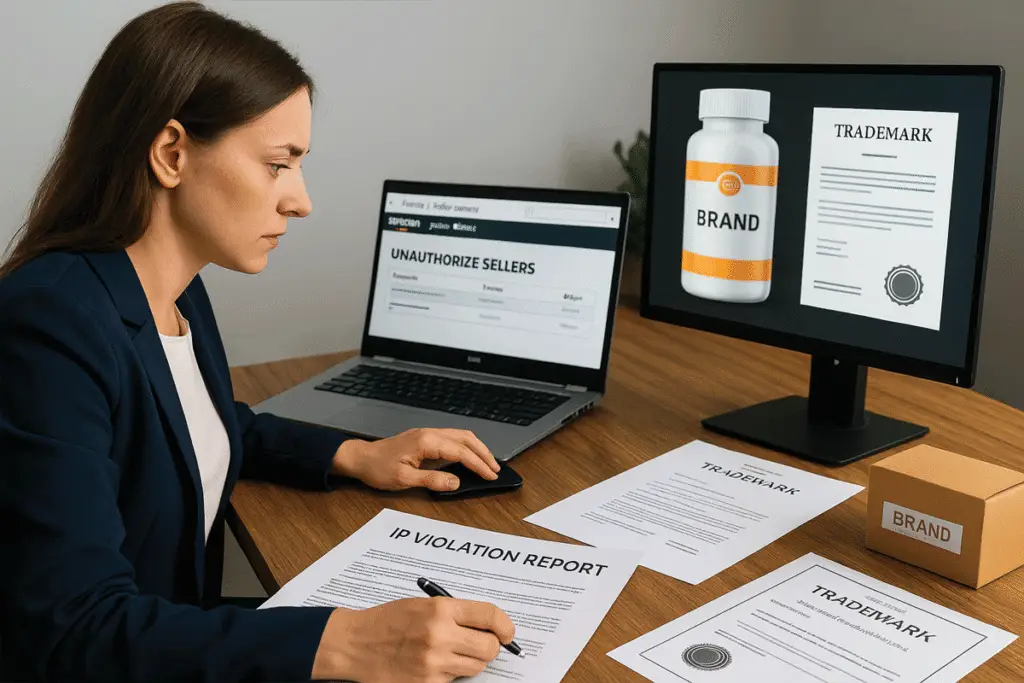Private Label Protection for Amazon Sellers in 2025

Introduction
Selling private label products on Amazon offers major growth potential — but it also opens the door to hijackers, unauthorized sellers, counterfeiters, and IP violations. In 2025, Amazon sellers must be more strategic than ever to protect their brand assets, product listings, and customer trust.
This guide outlines updated and actionable Amazon private label protection strategies tailored to sellers navigating today’s high-risk, competitive landscape.
What Is Private Label Protection?
Private label protection refers to the legal, strategic, and operational steps that Amazon sellers take to defend their:
Product listings
Trademarks and logos
Content (images, bullet points, A+ pages)
Customer experience
Marketplace reputation
Effective protection prevents hijackers from attaching to your listings, stops unauthorized resellers from undercutting your price, and ensures counterfeit products don’t ruin your brand integrity.
Common Threats to Private Label Sellers in 2025
Listing hijacking: Third-party sellers copy your listing and sell lookalike or fake versions
Unauthorized resellers: Sellers offer your product without permission, often at lower prices
Counterfeit goods: Imitations are sold under your listing, leading to bad reviews and returns
IP infringement: Competitors steal your images, copy, or product design
Account health damage: Customer complaints or fake returns trigger Amazon warnings
How to Protect Your Amazon Private Label Brand
✅ 1. Enroll in Amazon Brand Registry
Registering your trademark and enrolling in Brand Registry unlocks tools like:
A+ Content and Brand Story modules
Project Zero and Transparency programs
Brand enforcement dashboard
Automated protections against listing edits and fake listings
Keyword tip: brand registry Amazon 2025, Amazon brand protection tools
✅ 2. Monitor Listings and Seller Activity
Use tools like:
Amazon’s Listing Quality Dashboard
Automated seller monitoring platforms
Alerts for new sellers, price drops, or changed images
Catch hijackers before they do lasting damage to your Buy Box or reviews.
Keyword tip: Amazon hijacker removal, Amazon listing alerts, seller monitoring
✅ 3. Trademark and Copyright Everything
File trademarks for:
Your brand name
Product packaging
Custom logo or slogans
Also, copyright your original:
Product photos
Instruction manuals
A+ Content text
This gives you solid legal ground when filing infringement claims with Amazon or sending Cease and Desist letters.
Keyword tip: Amazon trademark enforcement, copyright on Amazon listings
✅ 4. Use Authorized Distribution Agreements
If you use wholesalers or third-party fulfillment:
Require authorized seller agreements
Control MAP (minimum advertised pricing)
Use serialized packaging or Amazon’s Transparency codes
Keeping distribution tight helps reduce listing hijackers and unauthorized competition.
Keyword tip: authorized reseller policy, Amazon, enforce MAP, Amazon
✅ 5. Respond Fast to Infringement or Hijackers
If someone hijacks your listing:
File an infringement complaint through Brand Registry
Submit a violation report under “Report a Violation.o
If they won’t leave, consider sending a formal Cease and Desist letter or arbitration notice
Keyword tip: Amazon IP complaint 2025, remove hijacker from Amazon listing
Bonus: Use Amazon Transparency and Project Zero
These tools, available through Brand Registry, help eliminate fakes:
Transparency uses scannable QR codes to verify authenticity
Project Zero allows brands to instantly remove counterfeit listings without Amazon’s approval
Final Thoughts
If you’re selling private label products on Amazon in 2025, protection isn’t optional — it’s essential.
Using Amazon’s built-in tools, IP rights, and monitoring strategies can stop hijackers, preserve your Buy Box, and keep your listings profitable.
Whether you’re just launching a private label or scaling a 7-figure brand, these protection tactics will help you grow securely and sustainably in today’s aggressive marketplace.
